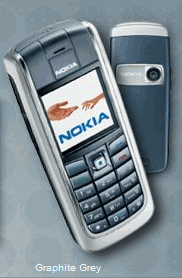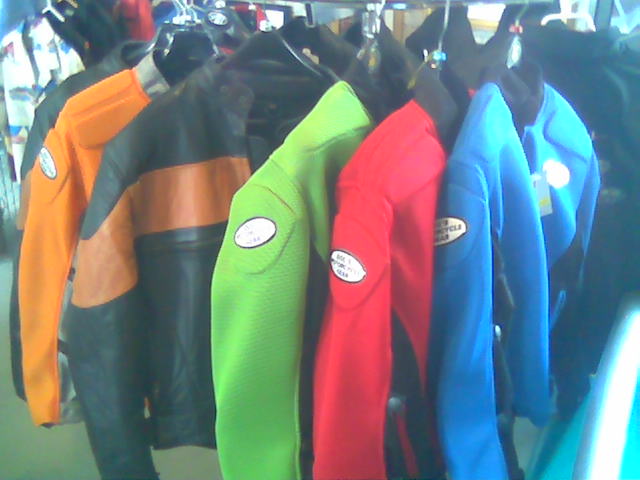| Review of the Nokia 6020 |
 |
The Nokia 6020 comes in two flavors. One supports 900 MHz, 1800 MHz, and 1900 MHz (for predominantly non-North American use) and a 6020b, which supports 850 MHz, 1800 MHz, and 1900 MHz (predominantly for use in Canada and the US). This test was of the European version which does not support 850 MHz.
The Nokia 6020b is available through Fido. Originally Posted: 31-Jul-2005 |
Before reading this review, please read Some Thoughts on Phone Reviewing.
While it is likely that the 6020b will exhibit exactly the
same traits as I found in the 6020, as the difference between the two phones
could be solely software-defined. Nonetheless, I cannot guarantee that the 6020b
will be identical to the phone that I tested.
RF Performance
RF Sensitivity: Since the version of the 6020 I had
available for testing didnít include 850 MHz support I could only compare the
performance of this phone at 1900 MHz. I could therefore make
direct tests against my Nokia 6310i, which also
doesnít support that band.
After careful testing the weaker areas near the Hall of Shame at Square One I
found that the 6020 was a very capable performer. In at least one test it
actually seemed to do better than my 6310i, but overall they were neck-and-neck.
Iíve long considered the performance of the 6310i to be exemplary, and so by
extension the 6020 also has exemplary RF sensitivity.
Over-the-road Performance: This aspect of the
phoneís performance was possibly the best Iíd experience in any Nokia model Iíve
tested. The big difference was in the way in dealt with handoffs, which was
decidedly smoother than the average Nokia model (including my 6310i with
firmware version 5.5). While I
wouldnít quite rate the phone as being as competent at this as most Motorola GSM
phones, it was pretty damned close.
Click on this link for a full description of
RF Performance, and how to interpret it.
Audio Performance
Tonal Balance: For the most part the balance is
quite good, but it seems to suffer from a bit of peakiness that can make certain
types of voices sound a tad shrill. Compared directly to my 6310i the 6020 is
decidedly tinny. An especially good example is the *680 number, which has
an excellent recording to test the overall balance of a phone. Nonetheless, I
wouldn't say that the 6020 has poor tonal balance, as it sounds markedly better
than many other phones I've tested.
Sound Reproduction: This aspect of the 6020 is very good, but surprisingly not quite as good
as the 6310i. Again, the difference between the two phones is quite small, and
it is unlikely youíd even notice unless you did back-to-back testing. Along with
the slightly more distorted sound compared to the old 6310i, the 6020 also
exhibited some background noise that isn't present on my 6310i. I was able to
perform side-by-side comparisons of the two phones to confirm the existence of
this background noise. Now don't get me wrong, the severity of the noise is
quite low, and it probably isn't even detectable without doing a side-by-side
comparison.
Outgoing sound quality is very nice, as is the case with most Nokia phones, but
also like those other Nokia phones it has a penchant to pick up every single
piece of background noise. When I recorded a test from a moderately noisy
location in Square One I could hear all of the people talking in the background
when I played it back. Other GSM phones, most notably Ericsson models, seem to
do a much better job of canceling background noise while still providing
excellent audio quality.
Earpiece Volume: In my original test of the 6020 I found the earpiece to have very low volume. At that time a number of people told me that the problem had been fixed in later firmware releases. I have since tested a 6020b and I have found the earpiece volume to be exemplary. Clearly the earlier problems were firmware-related, and so long as the 6020 that you buy isn't saddled with earlier firmware, you should have no trouble with this aspect of the phone. Indeed, the 6020 I tested in March of 2006 was at least as loud as my 6310i.
Speakerphone: The speakerphone on the 6020 is actually very
useable. In fact, it can produce audio thatís loud enough, even on faint
callers, that you might find yourself tempted to use it INSTEAD of the native
earpiece. The tonal balance of the sounder is a little tinny and shrill, but
overall it is very easy to understand your callers and itís not really that
fatiguing.
The microphone sensitivity is requisitely boosted when the speakerphone mode is
activated and it does a good job of picking up your voice, even at armís length.
However, when I tried the feature in my car at highway speed I found that the
background noise (which there isnít THAT BAD in my car) damaged the overall
quality of the outgoing voice. Certainly the speakerphone mode CAN be used in a
car, but not with the windows down.
Click on this link for a full description of
Audio Performance, and how to interpret it.
Support Features
Ringer Volume: The 6020 supports only musical
ringtones, but the sounder (which is also used for the speakerphone) can
generate some impressive volume if you choose tones with sharp sounds in them.
While the ringer could stand with being a bit louder, it should be audible under
all but the noisiest conditions.
Keypad Design: While the keypad design is Nokiaís
now-usual flush layout, there is enough space between the keys that you can
actually feel one from the other. This makes the phone much easier to use
(without looking at) than youíd image. However, Nokia has produced far better
keypads on previous models, and the design of the one on the 6020 seems more of
a styling exercise than serious attempt at solving a user interface issue.
Fortunately the keys have reasonably good (if a tad mushy) tactile feel, and the
consistency of that feel is uniform across each of the keys.
Display: The display is actually quite small, but
the resolution and overall quality of it are quite good. When used to display
photographs taken with the built-in camera the color reproduction is
surprisingly accurate. Like most color displays however, it is difficult to see
in the bright sunlight and in overcast conditions. However, this is pretty much
par-for-the-course with virtually all color screen phones on the market today.
Battery Life: I didn't have
the phone long enough to run the battery down, but during the 4 days I had it I
left it turned on most of the time and the battery was still going strong when I
returned it. Clearly then the 6020 has very impressive battery performance,
especially given the minute size of the battery.
Conclusions
When it comes to core functionality, the 6020 has just about everything you
could want in a phone with the exception of excellent tonal balance. However,
the tonal balance isn't that bad, and overall the phone excels at all of the
important aspects. For that reason I would highly recommend this model to
serious buyers looking for an inexpensive model that doesn't (usually) put style
ahead of substance.
************************************************
Howard Chu asked me to include the following 3 photographs that he took using the 6020. While I don't have anything to compare them to, the overall quality seems better-than-average for a 640 x 480 camera phone.


